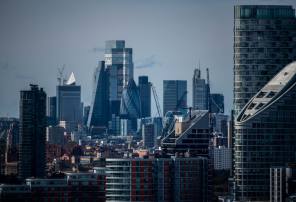

The UK economy shrunk in March as wholesale and retail trade sectors fell and the motor industry continued on a negative growth trajectory.
Gross domestic product (GDP) fell by 0.1 per cent in March, tailing a month of no growth in February which was revised down from 0.1 per cent expected growth.
Over the first three months of 2022, GDP has risen 0.8 per cent, below expectations of 1 per cent growth.
In March, a struggling services sector was the main contributor to a fall in GDP, according to the latest Office for National Statistics (ONS) data.
Overall, the sector fell by 0.2 per cent, reflecting what the ONS called “a large decrease” (15.1 per cent) in the wholesale and retail trade and repair of motor vehicles and motorcycles industry.
March was the fourth consecutive month of negative growth in the motor industry. The ONS pointed to a “supply chain squeeze” in the automotive industry, citing data from The Society of Motor Manufacturers and Traders which suggested this was the weakest March for new car registrations since 1998.
Production also fell in March by 0.2 per cent, and consumer-facing services took a 1.8 per cent hit. Meanwhile, construction grew by 1.7 per cent, partially offsetting these falls.
Quilter investors portfolio manager, Hinesh Patel, said the fall in consumer-facing services suggests the public concerns around the cost of living “are real”.
“They may have accumulated a wall of savings during the pandemic but now they could be beginning to hold that money back for impending price rises,” said Patel.
“With talk of recessions and weak global growth, they cannot afford to choke the economy to the point where they exacerbate the problem. Nimble monetary policy will be required, something that hasn’t necessarily been on show in the last six months.”
GDP is now 1.2 per cent above its pre-coronavirus level in February 2020. AJ Bell’s investment analysis head, Laith Khalaf, said the momentum of the UK’s post-pandemic recovery “seems to be ebbing away”, with recessionary forces gathering.
“GDP came in at 0.8 per cent for the first quarter of the year, a little below forecasts. What is more concerning is that almost all of the growth was registered in January, and March actually saw a 0.1 per cent fall in GDP,” said Khalaf.
Mazars Wealth Management’s chief economist, George Lagarias, agreed the underlying picture is weak.
“A return of tourism could be mistaken as real evidence of a post-pandemic normality. But by and large momentum for consumer-facing services is weakening,” said Lagarias.
"Production and construction also disappointed. Both sectors are suffering from high input costs and wildly unbalanced supply chains. While production might be less important for GDP, it is usually a precursor for services.”
Lagarias said the UK economy will probably grow this year, versus the previous one, but expects more economic weakness in the coming months.
“This is a result of higher interest rates, tax hikes and persistent inflation reducing real income, as well as external pressures due to the general slowdown in the global economy."
ruby.hinchliffe@ft.com



